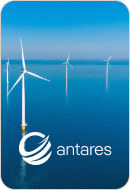10 relevant terms photovoltaic energy
Top 10 terms to know about photovoltaic energy
Decarbonisation Photovoltaic energy
Photovoltaic energy is a renewable and clean energy source that uses solar radiation to produce electricity. It can be produced by small generators for self-consumption or in large photovoltaic plants, and is one of the most important renewable energies for achieving decarbonisation goals.
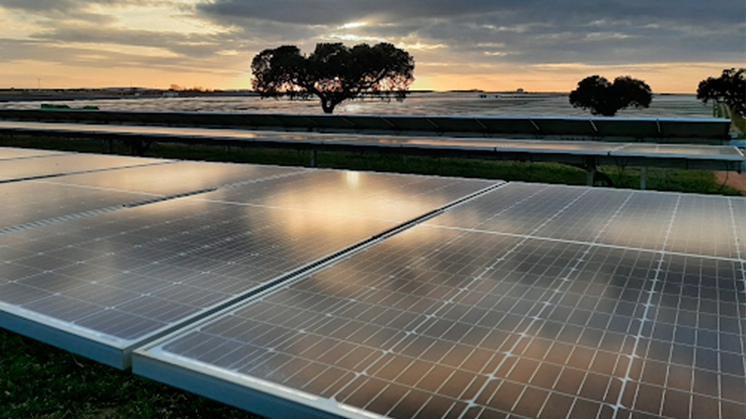
Solar energy, i.e., energy that uses solar radiation to produce electricity, has been used since the 1940s, with accelerated development in the last 50 years, where costs have decreased and effectiveness has increased inversely proportional. Initially used for toys and the space race, photovoltaic panels have been used since 1958 to supply energy.
From 1980 onwards, the price started to decrease steadily due to the use of new materials for the construction of the panels. Photovoltaic energy has become fundamental in the development of renewable energies and as part of the process to curb climate change. In addition, together with wind power, it accounts for more than 95% of global investment in clean energy.
Photovoltaics is based on the photoelectric effect, whereby certain materials can absorb photons and release electrons, which generates an electric current. This process must be done with a semiconductor device and only a few materials allow this. To better understand this process, it is necessary to know the 10 terms that define this energy.
Top 10 photovoltaic energy terms
Photon
The photon is the basis for any transformation of radiation into electricity. Photons from the sun collide with electrons in cell materials to separate them from the nucleus. The electron is released and as it moves, this generates an electric charge which is used to generate electricity.
Photovoltaic module or panel
The main element of the module are photovoltaic cells that take sunlight and convert it into direct current electricity, thanks to semiconductor materials such as silicon doped with other materials such as boron, phosphorus, arsenic, etc., which enable the photovoltaic effect. Their efficiency is the ratio between the electrical power output and the power received from solar radiation.
The other elements that make up the module are the frame, protective glass, encapsulating material, connectors and junction box.
The lifetime of a module is approximately 30 years.
Fixed structures
We refer to the installation of a fixed metal structure using posts, beams and purlins that allow the placement of photovoltaic panels. The selection of this structure is key to provide the panel with the optimum angle of inclination for optimal solar radiation absorption, as well as to withstand the different loads (wind, snow, seismic) wind.
Solar trackers
These are mobile metallic structures that connect the solar panel to the ground and move following the sun, with the aim of capturing as much radiation as possible and thus maximising the electricity production of the installation. Currently, the most widespread solution is the single-axis tracker.

Photovoltaic plants
Photovoltaic solar energy is obtained by converting sunlight into electricity.
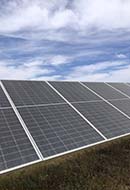
Photovoltaic solar panels: what they are
Photovoltaic solar panels are key to the implementation of solar energy.
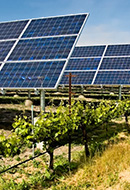
Agrovoltaics
When agriculture and renewables go hand in hand.
Power Blocks (Power Block)
The power block consists of the inverter and the transformer:
- Inverter: The inverter is the equipment responsible for transforming the direct current generated by the photons in the solar panels into alternating current. In order for us to be able to consume this energy in our homes, it is necessary to transform it into alternating current. Inverters can be central or string inverters.
- Transformer: It is in charge of elevating electrical energy from low to medium voltage, which has less losses in its transfer.
These blocks are needed either to take it directly to the consumer or to transfer it to a substation to increase the power once again for transport in the transmission or distribution network.
Photovoltaic self-consumption
It is based on the individual (or small group) production of electricity for own consumption. The aim behind these installations is not only to save on electricity bills, but also to slow down climate change through the use of renewable and non-polluting energies.
There are different types of self-consumption, depending on the use given to the energy produced by the installation. One of them is self-consumption without surplus, in which the user uses the energy produced only to supply their energy needs. In self-consumption with surplus, part of the energy produced is injected into the electricity grid.
Agrovoltaics
Agrovoltaics is about making compatible the land uses of installations to produce energy and to carry out agricultural or livestock activities.
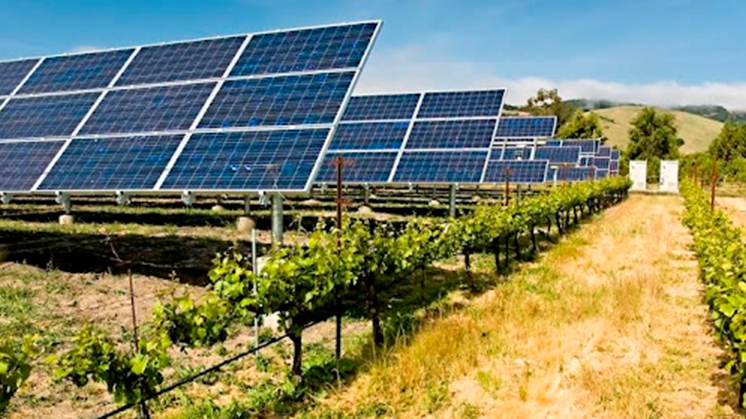
Examples of agrovoltaics include livestock farming, beekeeping and the cultivation of aromatic herbs. The aim is to combine renewable energies with the use of this land by workers in the primary sector.
Bifacial modules
Bifacial modules are so called because they are able to capture solar energy on both sides of the module, i.e., they also capture the radiation that is reflected by the ground. This increases electricity production by increasing the available surface area without taking up more space.
Albedo
The percentage of radiation reflected by any surface with respect to the radiation received is known as albedo. This exists on all surfaces and has different values. The higher the albedo, the more incident radiation is reflected by the ground, the more radiation the module can absorb and therefore the more electricity can be generated.





